14+ Sample Research Status Report
-
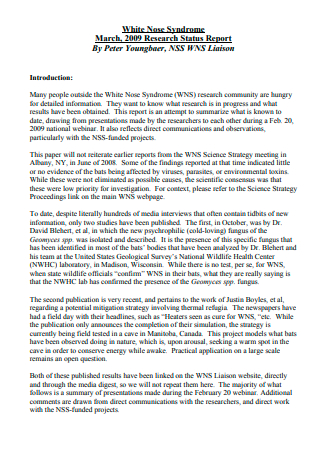
Research Status Report Template
download now -
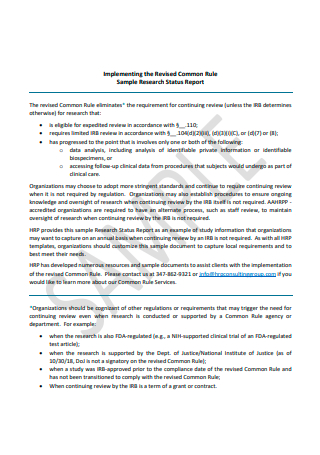
Sample Research Status Report
download now -
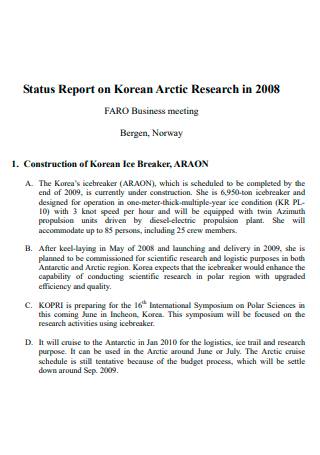
Research Status Report Example
download now -

Annual Research Status Report
download now -
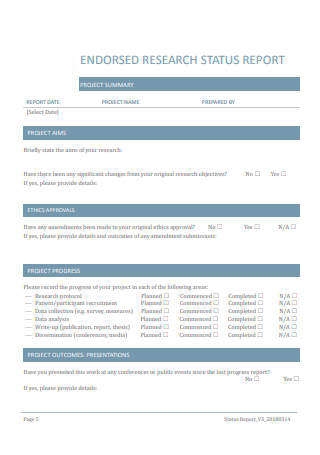
Formal Research Status Report
download now -
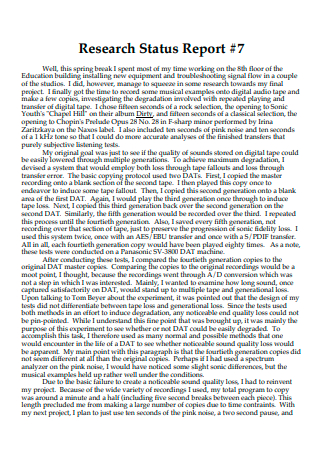
Research Status Report in PDF
download now -
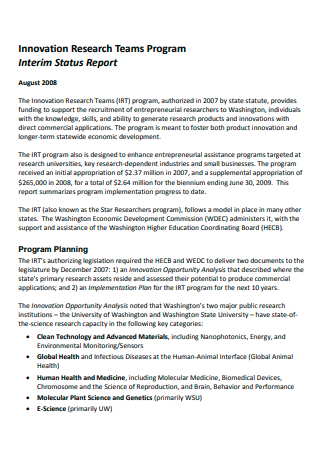
Innovation Research Teams Program Interim Status Report
download now -
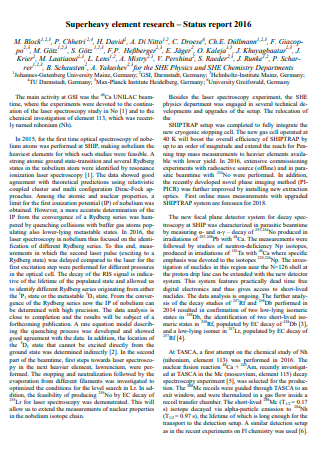
Element Research Status Report
download now -

Basic Research Status Report
download now -
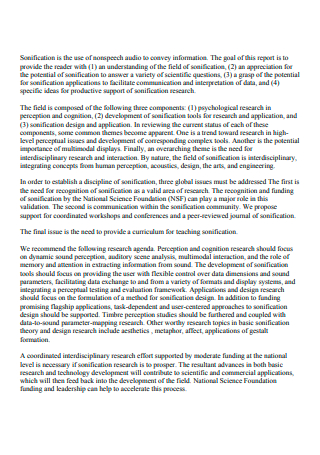
Field and Research Agenda Status Report
download now -
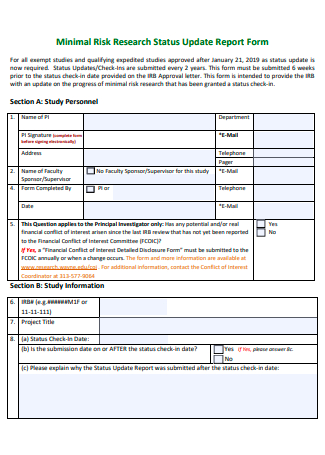
Research Status Report Form
download now -

Mobile Data Access Research Status Report
download now -
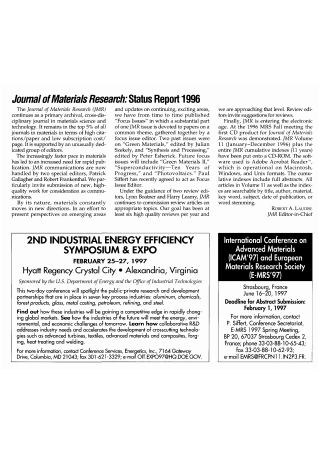
Materials Research Status Report
download now -
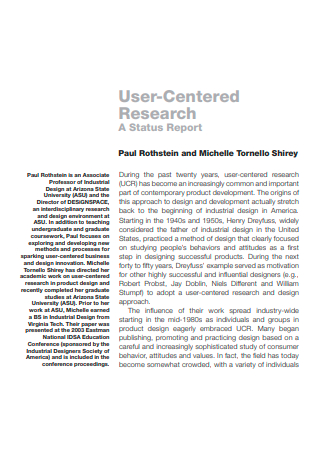
User Centered Research Status Report
download now -
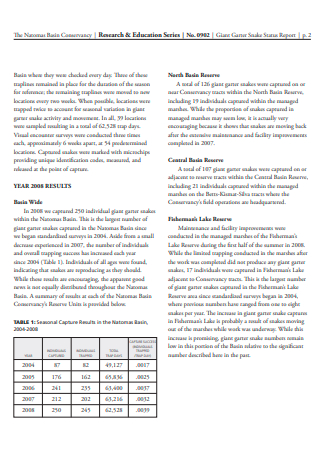
Standard Research Status Report
download now
FREE Research Status Report s to Download
14+ Sample Research Status Report
What Is a Research Status Report?
Importance of a Research Status Report
How to Write a Research Status Report
Elements of a Research Status Report
Tips for a Good Research Status Report
FAQs
What is the difference between a status report from a progress report?
What are the different types of research reports?
What are the benefits of a progress report?
What Is a Research Status Report?
A research status report is a document that compares the progress of a completed study to the Research Plan over a particular time period. Status reports are used by project managers to keep stakeholders up to date on progress and to track expenses, risks, time, and work. Project managers and stakeholders can display research data using charts and graphs in research status reports. As a method of maintaining your schedule and keeping everyone on the same page, research progress reports are collected on a regular basis during every phase of the project’s execution
Importance of a Research Status Report
Creating research status reports has several advantages. You have a lot of moving pieces to handle as a Project Manager. It can be tough to keep your projects on track or even know whether they are on track in the first place due to budgets, timelines, risk management, and stakeholder buy-in.
This is why project status reports are crucial. The hidden jewel in the project manager’s tool belt is status reports. They not only inform stakeholders and other team members about a project’s state and development but also assist managers in tracking all of the critical indicators.
Managers may maintain their grip on the pulse of the project by creating research status reports, which help them to spot areas that require more attention before they become major issues.
How to Write a Research Status Report
Now that a research status report has been defined and elaborated on its importance, you are heading to the guide on how to write your own. If you are worried and have little time to start from scratch, you are in luck because our article provides you with various templates and project status report examples that you can view. Feel free to check out Monthly Project Status Report for a similar format that you can use as well.
Step 1: Write an Introduction
If you are sending your message to stakeholders or higher-ups, you will want to start your research status report with a quick introduction to the relevant points. This will direct your readers to the most relevant sections of the Research progress report and prepare them for the project’s follow-up discussion. Any report without an introduction may be seen as informal but if you are wondering why your report can’t jump into the next points, it’s mainly because the introduction acts to greet the reader and briefs them of the purpose of the report. Not everyone who will receive your report may be fully aware of the research program, so before they jump into the details, they are at least aware of what to expect.
Step 2: Project Summary
You should summarize everything that happened or did not happen on your project in the previous week in this portion of the research status report, as well as what you plan to achieve in the future week. Bullets are usually effective in this area. These should be quick status updates on tasks, deliverables, meetings, communications, and decisions, among other things. Stating the gathered research information is vital through a Summary Report in order to be direct to the point and inform the readers right away of the progress of your project. There are various available research status examples for you to view and use as a reference for this step and the rest to come.
Step 3: State the Project Timeline
The key to remaining organized is to divide your project into groups so you can track the progress of each phase, deliverable, or task. You should provide the overall percentage of completion of your project, as well as your project groups, in this area of the research status report. You may find a Timesheet to be useful to keep track of the state of your project and to easily convert it into a research status report. Good project management will surely earn you commendations from stakeholders or higherups when you present the report to them.
Step 4: Add in the Project Budget
When it comes to your project Budget, don’t leave your team or stakeholders in the dark. Depending on the scope of your project, you may want to discuss the total budget or budgets for individual activities. You may also compare the overall percentage spent with the total number of hours spent. Do your task here and talk to your team or project head about how honest you should be in your research status report. Also, if you believe your stakeholders or team may be concerned about the situation, don’t be afraid to include remarks.
Step 5: List the Action items
Projects are more than just a list of tasks and deadlines. In reality, meeting such milestones usually necessitates keeping track of a lot of to-dos or action items. Check out our project progress report example to keep track of anything that might affect your timetable or budget. Any occurrences, tasks, activities, or actions that must occur are documented. Action items are small, self-contained entities that may be managed by one person. Be sure to assign responsibility to each team member so that everyone knows what is expected of them.
Step 6: Project Risks and Counter Measures
Things go wrong on projects all the time, but they don’t have to. It will be your responsibility to keep an eye out for problems and hazardous materials to ensure that nothing goes wrong. You should provide as much information as possible and be prepared to debate it. No team member or stakeholder should be too complacent in the status of the project even if they don’t see a risk of potentially harming the project. Even if you aren’t constantly tracking risks on your projects, this portion of your research status report should be included. Your stakeholders and team must know you are always on the lookout for possible problems. You may even conclude your status review on a positive note if there is really nothing to report.
Elements of a Research Status Report
Various components comprise the contents of a research status report. Stated below are the most valuable and relevant that you should keep in mind when writing your report.
Budget status: Most companies keep good track of project costs to assess the spending and tie it to the status of the project but tracking time, materials, and other expenses by the job aren’t as difficult as it seems. You may need to use a Budget Calculator to keep track of the budget and the connected material and other expenses.Schedule and budget projections: The present budget and schedule status are useful, but projecting them out to the end of the project is much more so. It enables you to see beyond the schedule and budget performance to estimate the ultimate project budget and schedule, which higherups or stakeholders would appreciate the estimation or precise calculation of where and how long the budget will last them.Scope control: One of the most common reasons for project stress is handling scope problems. Perhaps this is due to the tendency to estimate aggressively and then spend additional time performing higher-quality work than an initially anticipated effort. It might also be because it’s human tendency to think the project can handle a little bit of everything, causing the scope to grow. Whatever the cause, project scope management is critical to project success. Controlling the scope and validating deliverables are two essential aspects.Stakeholder communication: This is used to guide stakeholder discussions as part of the overall project management plan. Check to see if the plan’s stakeholder communications have taken place as well as be sure that what the stakeholder communicated is still serving the project’s needs. If a stakeholder’s status must change over the project, you should keep track of it as well because this is a circumstance that might affect a considerable number of project management resources. To ensure that they are advancing down the road, these stakeholders should be followed and their communications reviewed at regular project status intervals. The project status report discusses the actions of stakeholder engagement over time and whether or not each stakeholder is in favor of the development of the project.Quality control: Deliverables are a part of any project. Products or services might be included in these deliveries. They should be examined after manufacturing in a procedure known as quality control, regardless of their format, size, shape, or color. Quality control measures are used to verify whether goods meet their specifications, and they should be documented and maintained in the project documentation. Any quality control concerns or deviations should be addressed in the project status report, as well as the steps are taken to rectify out-of-spec circumstances.Resources: Each project job is given resources, which are evaluated on a regular basis to see whether they are still available if their efficiency is still acceptable and if any other issues could affect their usage on the project. Some jobs require a single resource to complete the activity, such as specialized construction equipment or an expert reviewer for a design report. Others have resources that can be readily swapped or replaced. In any scenario, the project status report mentions resource availability to provide stakeholders with critical information.Risks: Internal and external variables that pose a danger to your project are referred to as risks. When they have an impact on your project’s budget, timetable, or scope, they constitute a problem. Make a list of the difficulties that have occurred so far in the project. Use the same questions to assess the dangers you are aware of.Metrics: It’s critical to back up your claims in your report with reliable data. During the planning phase of the project, you should have set the metrics for status reporting. It’s difficult to tell whether or not your project is a success without assessing its efficiency. These indicators are a means to demonstrate that you’re on track and to determine what, if anything, needs to be addressed.
Tips for a Good Research Status Report
With the basics given, it is safe to assume you know how to write a research progress report and the important elements that comprise it. Though if you are still doubting the quality of your Research status report, or want to go the extra mile to perfecting it, there are additional points laid out for you.
FAQs
What is the difference between a status report from a progress report?
Although they both lack any significant differences, it appears to be two distinct things. Stasis is communicated by a status report, depicting what is true at a specific point in time. A progress report tallies the passage of time. It depicts what has occurred and may even hint at what may occur in the future. It’s crucial to note that each one focuses on a different aspect of the subject. The status report emphasizes accomplishment and it is possible to make it shorter. As a result, it’s appropriate for an executive audience. The events are highlighted in the progress report and it is a bit longer. It demonstrates what has occurred and so serves as a historical record. Both are beneficial to a project manager’s ability to keep track of projects and effectively convey them.
What are the different types of research reports?
Journal articles, technical Research Reports, monographs or books, graduate theses, or dissertations are all examples of research reporting forms. Oral presentations of research are given at professional meetings, seminars, symposia, and workshops.
What are the benefits of a progress report?
It’s a good way to keep researchers and research teams on schedule and on track. Progress (or lack thereof) is documented in writing; and allows stakeholders, clients, and even supervisors to offer quick feedback and intervention by informing project managers of issues.
Research status reports that are clear, concise, and accurate increase the likelihood of a project’s success. As a project manager, you are tasked first and foremost to ensure the success of the project, including the additional responsibilities there are to writing paperwork that will serve as a tool to aid the project’s success. And even if you aren’t the lead project manager and merely tasked with writing the report, you still need to work with your team to create a report that is pristine and informative to both the stakeholders and the lead project manager.
